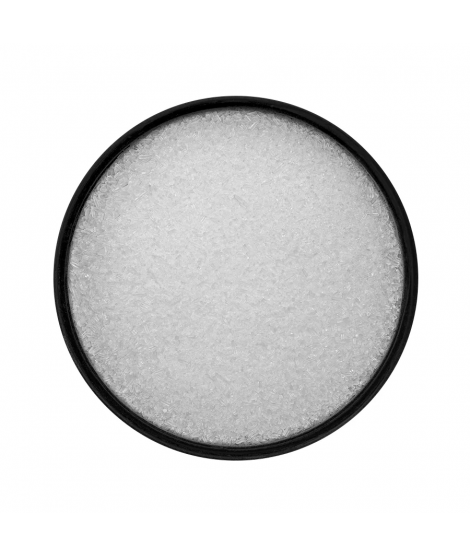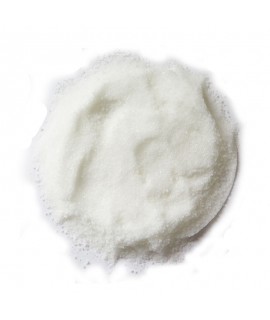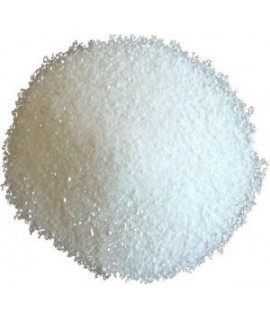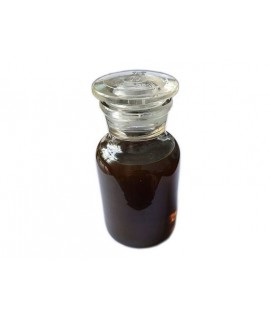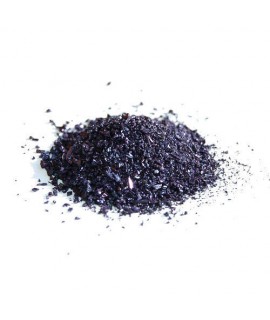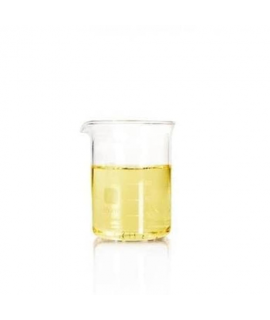MONOPOTASSIUM PHOSPHATE (MKP) 99%, kg
5.59 €
01731408
MKP, CAS 7778-77-0, Monobasic potassium phosphate, INCI POTASSIUM PHOSPHATE, monopotassium salt of phosphoric acid, potassium biphosphate
Parameters | Feature |
Monocalcium phosphate | MKP, Monobasic potassium phosphate, monocalcium salt of phosphoric acid, potassium bisphosphate |
Formula | KH2PO4 |
Structure |   |
IUPAC | Kalium dihydrophosphates - Potassium dihydrogen phosphate |
INCI | POTASSIUM PHOSPHATE |
CAS | 7778-77-0 |
Clay mass | 136.086 g/mol |
Density | 2.338 g/cm3 |
Solubility | In the water: 22.6 g/100 mL (20 °C) 83.5 g/100 mL (90 °C) |
Monocalcium phosphate (MCP) (also known as potassium dihydrophosphate or monobasic potassium phosphate) is an inorganic compound with the formula KH2PO4.
In the horticultural class of fertilisers, MKP powder contains 52 % P2O5 and 34 % K2O and is labelled NPK 0-52-34. FYM is often used as a source of nutrients in greenhouses and hydroponics. It is recommended to use FFPs as a source of phosphorus and potassium when nitrogen content is to be kept low. FYM has a moderate acidity and will not corrode fertiliser pumps or irrigation equipment. Fertilisation is used to accelerate flower formation and flowering. A high phosphorus content intensifies the colour of the flowers. It is advisable to start fertilising with monocalcium phosphate when the first flower buds appear. It is also recommended for high-sugar fruit trees at the time of fruiting to increase sugar content and improve fruit quality. Fertilisation by irrigation: 1-2% solution for most plants. Foliar fertilisation: fertilise every 8-10 days with a 0,2% solution (20g/10l water). For strawberries, flowers, apple trees, pears, foliar fertilisation at a concentration of 0,1-0,2% (10-20g/10l water). For tomatoes, foliar application at a concentration of 0,3% (30g/10l water). For shrubs, 0,2% (20g/10l of water) foliar concentration. FYM is compatible with most pesticides and fertilisers used. However, it should not be mixed with calcium or magnesium fertilisers. Iron, manganese, zinc and copper must be in the form of chelates, otherwise insoluble compounds may form.
In cosmetics, potassium phosphate is used in skin care products to adjust (buffer) the pH of the formula, keeping it acidic (pH ~ 5-6). This component is found naturally in the human body where it is used for cell and tissue repair and growth and has therefore been deemed safe for use in cosmetics. It is used as an emulsifier, emulsion stabiliser, thickener and penetration enhancer. Potassium phosphate improves the level of adsorption of the other ingredients and prolongs their action. In addition, due to the antiseptic properties of potassium phosphate, it is used as a preservative enhancer, which is particularly effective in the combination of fatty acids used in creams, moisturising oils and masks. Its functions (INCI)
- pH regulator: stabilises the pH of cosmetics
In the cleansing industry, monocalcium phosphate is used both as a main ingredient and as an auxiliary ingredient. A 1% solution gives a pH of 4.5, i.e. a mildly acidic solution which is able to react with lime soils and can therefore be used for cleaning a wide range of surfaces resistant to acidic media. MKP is used as a buffer to prevent strong pH variations. Its properties are very useful in the manufacture of detergents, as it bleaches fabrics, refreshes colours thanks to the properties of monocalcium phosphate, without damaging the structure of the fabrics, as natural fibres (cotton, wool, etc.) are resistant to acidic media.
In medicine, monocalcium phosphate is used as a substitute for phosphates in hypophosphataemia.
In metalworking, FCC is used for mild acid cleaning and to provide anticorrosion protection. These properties are important in metalworking with different types of patinas.
In school experiments, FEM is used in crystal growth and crystal research because of its non-linear optical properties. It is used in optical modulators and in non-linear optics such as second harmonic generation (SHG).
In the automotive industry, monocalcium phosphate is used in the manufacture of power steering fluids, transmission fluids, brake fluids, fuel injector cleaners, gas cleaners, due to its anti-corrosive and pH-regulating properties.
Important: add the product to your basket, fill in the recipient's details and confirm your order. Thank you!
To save your precious time, we will deliver your order to your address at your convenience!
*- Photographs of the goods may not reflect the actual appearance, colour, assembly or shape of the goods and their packaging. The information in the description of the goods is of a general nature and may not correspond to the information on the packaging of the goods, nor does it indicate the exact use of the goods. The information given on the stocks and prices of goods may, in certain cases, differ from the actual prices and stocks of goods
Signal word: Caution |
Hazard icons:
|
Danger phrases: H319 Causes severe eye irritation |
Precautionary phrases: P103 Read the label before use. P264 Wash hands thoroughly after work. P280 Wear protective clothing as described in Chapter 8. P305+P351+P338 In case of contact with eyes: rinse gently with water for a few minutes. Remove contact lenses if present and easy to do so. Continue rinsing. P337 + P313 If eye irritation persists: seek medical advice. P501 Dispose of in accordance with local regulations or authorities. |
01731408
Related products
(8 other products in the same category)

